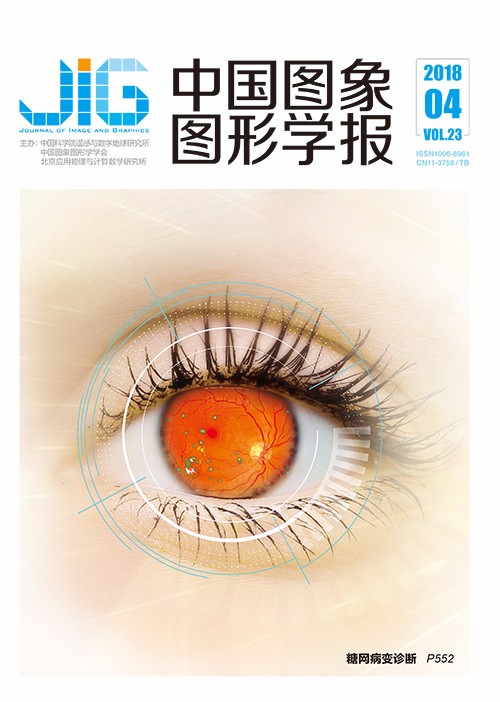
结合插值细分和径向基函数的3维扫描数据孔洞修补
摘 要
目的 逆向工程中3维扫描数据通常产生孔洞影响逆向造型精度.针对已有算法补洞会导致的边界突变问题,提出基于插值细分和基于径向基函数的孔洞修复算法。方法 首先,对有噪声孔洞边界进行拉普拉斯平滑预处理;其次,通过快速重心插值细分孔洞;然后,结合孔洞周围曲率信息,利用边界和法线约束点进行隐式曲面求解;最后,利用求得的隐式曲面方程,利用梯度下降法调整孔洞插值点,获得平滑修补孔洞结果。结果 对3维经典造型以及实际机械工件等两类不同的数据进行扫描并进行孔洞修补实验。由于算法针对有噪声孔洞结合了孔洞周围曲率信息并通过插值细分进行约束求解,保证了补洞效果的平滑性。实验结果表明,本文算法使得基于径向基函数隐式曲面对有噪声孔洞的适应性更强,其修补结果更加平滑,符合周围曲率变化,改进了已有孔洞修补的边缘突变和修补痕迹明显问题。结论 本文算法针对基于径向基函数的隐式曲面求解对噪声敏感的局限性,进行平滑预处理,结合孔洞周围曲率,提高了孔洞修补效果。由于基于径向基函数的隐式曲面对光顺的流形曲面模拟较好,所以算法对特征孔洞的修补存在一定的不足,快速重心插值法针对不规则孔洞也有一定的局限性。
关键词
Combining interpolated subdivision and radial basis function for filling 3D scanning data
Pan Xiang1, Jiao Wuzhen1, Zheng Herong1, Zhang Sanyuan2(1.College of Computer Science and Technology, Zhejiang University of Technology, Hangzhou 310023, China;2.College of Computer Science and Technology, Zhejiang University, Hangzhou 310012, China) Abstract
Objective The development of 3D reconstruction technology has led to the wide application of 3D scanning technology in the cultural relic reconstruction and reverse engineering industries. However, scanning models usually include many holes after reconstruction due to the scanning environment, scanning techniques, and other factors. Models with holes affect follow-up application in the cultural relic reconstruction industry and industrial reverse industry. Radial basis function has been widely used in repairing holes. However, implicit surfaces based on radial basis function are sensitive to noise data. Therefore, they cannot be efficiently used in noise hole filling. This study proposes an improved hole-filling algorithm based on radial basis function. The algorithm mainly consists of smoothing noise data, interpolation subdivision hole structure, and radial basis function. In this way, the proposed algorithm can resolve the boundary mutation problem for noise hole repair. Method First, the algorithm uses the Laplace function to smooth the boundary of noisy holes. We use the topological structure of adjacent triangles on the model to check the boundary of holes and identify holes. After identifying holes, we smooth their boundary by multiple neighborhoods before building an implicit surface. The algorithm uses the smoothed data to solve the implicit surface on the basis of the radial basis function. Second, the algorithm subdivides the holes by applying the fast center of gravity interpolation method for regular holes. The gravities of boundary and convergence are used to perform a subdivision process. Third, the algorithm combines the curvature features around the holes to make the filling holes consistent features with scanning data. Therefore, boundary and normal constraint points are used to define the implicit surface solution. The boundary constraint points are taken from the multiple neighborhoods from the boundary of holes, and the normal constraint points are taken with the constraint of normal direction. Finally, the algorithm adjusts the interpolation point with the gradient descent method. The points of interpolation subdivision holes are usually not on the scanning surface of the holes. The algorithm uses the obtained implicit surface equation to find the partial derivative to adjust the interpolation points to the scanning surface rapidly. We use the gradient descent method and the setting error threshold to adjust the interpolation points of holes. In this way, we can achieve smooth patch of filling results. Result 3D classical models and actual mechanical workpieces are scanned to verify our algorithm. The comparison experiment is conducted by applying the wave-front method and Geomagic software method to the same holes. Our algorithm uses a preprocessing method for smoothing holes and keeps the curvature features around the holes. An implicit surface based on the radial basis function is applied to ensure the smoothness of repairing holes. The repairing holes become highly consistent with the surrounding curvature. The experimental results show that the proposed algorithm based on radial basis function is adaptable to noise holes. The results of this algorithm are consistent with the curvature variation around the holes. Therefore, the filling results are natural and smooth. The algorithm is a good way to improve the existing problems of edge mutation and trace obvious. Conclusion The algorithm solves the noise sensitivity problem of implicit surfaces based on radial basis function by the curvature features around holes. However, the results of the algorithm are not ideal for filling some complicated holes. The fast barycentric interpolation function also has limitations for irregular holes.
Keywords
image reconstruction interpolation subdivision gradient adjustment Radial Basis Function implicit surface equation
|



 中国图象图形学报 │ 京ICP备05080539号-4 │ 本系统由
中国图象图形学报 │ 京ICP备05080539号-4 │ 本系统由